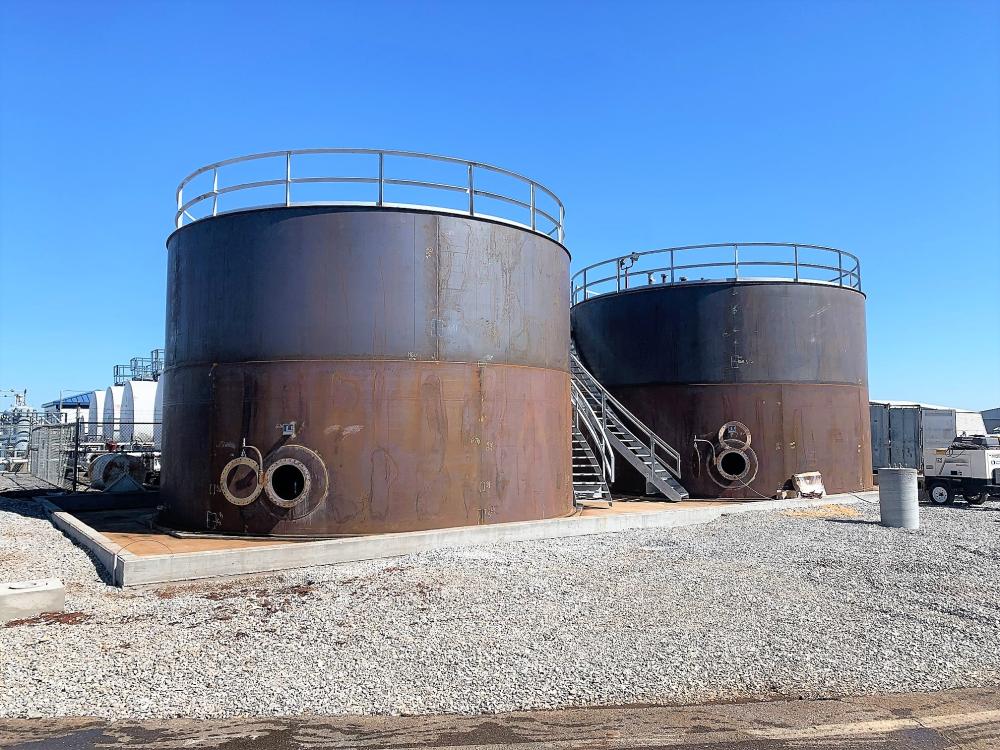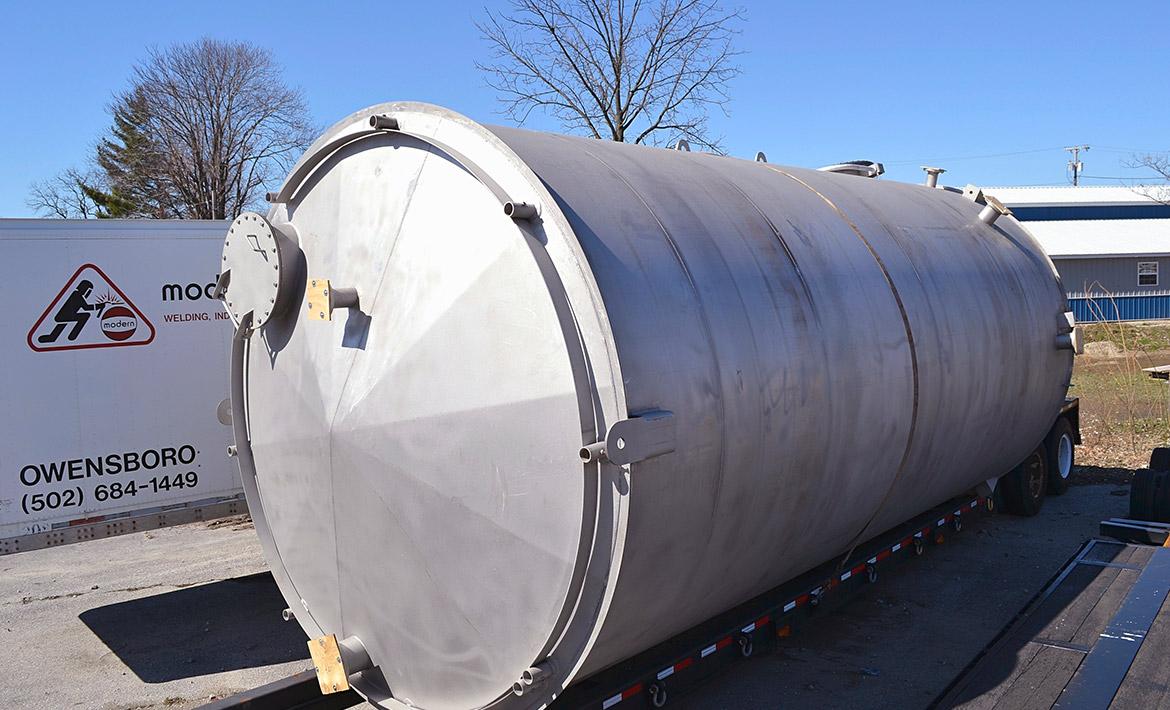The Importance of API 650 Welding Inspection in Industrial Vessel Construction
Comprehending the Significance of Welding Inspection in Quality Control Processes
Welding assessment is a crucial element of quality control in building and production. It ensures that welds follow established criteria, which is vital for structural integrity. Numerous assessment techniques, from aesthetic to ultrasonic testing, help recognize problems early. This positive approach not just avoids pricey repair services but additionally improves safety. Comprehending the nuances of welding examination can expose its more comprehensive ramifications for industry compliance and reputation. API 650 Welding Inspection. What exists beneath the surface area of these practices?
The Function of Welding Inspection in Quality Control
While welding is a vital process in different sectors, its high quality and honesty hinge significantly on effective assessment techniques. Welding evaluation offers as a safeguard, making sure that welds fulfill recognized criteria and specifications. This process not just recognizes issues however additionally assesses the overall craftsmanship, therefore contributing to the security and longevity of bonded frameworks. Inspections are essential to top quality guarantee, as they help avoid expensive failings and preserve conformity with industry regulations. By employing proficient assessors, companies can boost their functional performance and copyright their credibilities. Additionally, the insights acquired from evaluations can notify constant enhancement, causing much better methods and training for welders. Eventually, welding assessment functions as a vital web link in the quality control chain, making sure that every joint is trusted and qualified of standing up to the rigors of its intended application. This diligence is crucial for the honesty of facilities and the security of end users.
Kinds Of Welding Inspections
Welding examinations include a variety of methods designed to review the high quality and integrity of welds. These inspections are crucial in making certain compliance with industry criteria and specs. Usual kinds of welding evaluations consist of aesthetic inspection, which permits for immediate recognition of surface irregularities; ultrasonic testing, which utilizes high-frequency sound waves to detect interior imperfections; and radiographic screening, utilizing X-rays or gamma rays to reveal weld honesty underneath the surface area (API 650 Welding Inspection). Furthermore, magnetic particle screening is utilized to determine surface area and near-surface stoppages in ferromagnetic materials, while color penetrant testing supplies a method for disclosing surface-breaking defects. Each kind of inspection offers a specific function, adding to the general quality control procedure. By using a combination of these methods, inspectors can offer a thorough evaluation of welding top quality, ultimately making sure the safety and security and reliability of bonded frameworks
Common Problems Identified in Welding
A variety of typical issues can take place during the welding process, affecting the honesty and performance of welded structures. These flaws consist of porosity, which involves trapped gas pockets within the weld, deteriorating its toughness. Splits might also form because of rapid air conditioning or inappropriate joint design, resulting in prospective failing under anxiety. Insufficient blend takes place when there wants you can try here melting of the base steel, causing weak bonds. Another defect, undercutting, involves the removal of base metal along the weld edge, creating a considerable structural weakness. Furthermore, excessive spatter can affect the appearance and necessitate further cleaning or repair. Imbalance can lead to unequal weld beads, jeopardizing the overall quality. Identifying these defects early via correct assessment methods is necessary to ensure the dependability and safety of welded parts, eventually securing the performance of the whole framework.

Benefits of Normal Welding Assessments
Regular assessments play a significant duty in maintaining the top quality and safety of bonded structures, especially in light of the typical defects formerly outlined. These inspections offer an opportunity to determine and rectify issues before they escalate right into serious issues, ensuring structural honesty. By spotting imperfections early, organizations can lessen fixing costs and prevent possible project delays.
Furthermore, normal welding inspections improve conformity with sector standards and policies, promoting trust fund amongst stakeholders. This adherence not only safeguards the business's online reputation but also contributes to enhanced safety and security for employees and the public.
Constant assessments promote far better training and ability advancement for welders, as comments from see this assessments can assist look at this site renovations. Eventually, the advantages of routine welding evaluations prolong beyond immediate quality control, advertising lasting functional effectiveness and integrity in welded frameworks.
Ideal Practices for Effective Welding Examination
Executing best techniques in welding assessment is vital for assuring the greatest standards of top quality and security. First, assessors should be properly educated and accredited, possessing a detailed understanding of welding methods and products. Using advanced assessment technologies, such as ultrasonic screening and radiography, enhances the detection of issues that may not be noticeable to the naked eye. Establishing a clear examination plan, outlining the standards and frequency of examinations, guarantees consistency and thoroughness.

Recording all findings thoroughly is essential for traceability and accountability. Routine calibration of examination equipment guarantees precision, while keeping a orderly and tidy work space reduces the danger of contamination. Furthermore, cultivating open interaction among team members assists in the sharing of understandings and advertises a society of top quality. By adhering to these ideal methods, companies can especially boost their welding quality control processes, ultimately leading to safer and much more trusted items.

Regularly Asked Inquiries
What Credentials Are Required for a Welding Examiner?
A welding inspector generally requires qualification from identified organizations, such as the American Welding Society (AWS) or the International Institute of Welding (IIW), in addition to pertinent experience and understanding in welding processes and top quality requirements.
How Often Should Welding Inspections Be Executed?
Welding examinations ought to be performed consistently, normally at various task stages, consisting of before, throughout, and after welding processes - API 650 Welding Inspection. The regularity typically depends on job specifications, regulative requirements, and the complexity of the welds involved
What Are the Expenses Connected With Welding Assessments?
The costs related to welding examinations vary extensively, generally varying from a couple of hundred to several thousand bucks, depending on elements like examination type, job dimension, and location, affecting total project budget plans and timelines.
Can Welding Inspections Be Performed From Another Location?
Yes, welding evaluations can be carried out from another location using sophisticated modern technologies such as drones, cams, and ultrasonic screening. These approaches permit inspectors to examine weld honesty without being literally present, improving effectiveness and safety and security in different atmospheres.
Just How Do Inspection Results Effect Job Timelines?
Assessment results can substantially impact project timelines by identifying problems early, causing essential rework or changes. Hold-ups might take place if inspections reveal issues requiring resolution, ultimately affecting overall project completion and budget adherence.
Welding evaluations include a variety of methods developed to assess the quality and integrity of welds. Common kinds of welding examinations consist of aesthetic assessment, which enables for instant identification of surface abnormalities; ultrasonic screening, which utilizes high-frequency sound waves to spot internal flaws; and radiographic screening, using X-rays or gamma rays to expose weld stability below the surface area. Regular assessments help with better training and ability growth for welders, as comments from inspections can lead renovations. Carrying out ideal methods in welding evaluation is important for assuring the highest requirements of top quality and security. Welding assessments should be executed on a regular basis, normally at various task stages, consisting of before, throughout, and after welding processes.